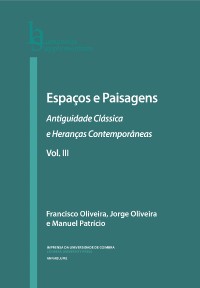Please use this identifier to cite or link to this item:
https://hdl.handle.net/10316.2/31569| DC Field | Value | Language |
|---|---|---|
| dc.contributor.author | André, Paula | |
| dc.date.accessioned | 2014-06-24T11:00:22Z | |
| dc.date.accessioned | 2020-09-21T02:25:58Z | - |
| dc.date.available | 2014-06-24T11:00:22Z | |
| dc.date.available | 2020-09-21T02:25:58Z | - |
| dc.date.issued | 2012 | - |
| dc.identifier.isbn | 978-989-26-0292-9 (PDF) | |
| dc.identifier.uri | https://hdl.handle.net/10316.2/31569 | - |
| dc.description.abstract | The pre-existence of the Cardo / Decumanus in the 18th century Pombaline Plan for Lisbon and their inheritance in contemporary Lisbon. The logic of Pombal’s Plan for the reconstruction of Lisbon after the earthquake of 1755, is set in the enlightened and hygienist thought of Ribeiro Sanches and his work Tratado de conservaçam da saude dos povos (1756). According to this work, based on the classic thought of Vitruvius, “the Romans built the (main) streets with the same width of military lanes, or royal roads; they led to city gates or the squares: the second type of streets was narrower and corresponded to the width of the paths that came from the military lanes”. This hierarchy is present in Pombal’s Plan, carried out by the engineers/urbanists, composed of main streets and secondary streets, and shows that city planning never forgot the two pre-existing structural axis, the Rua Nova d’El Rei – Cardo – and the Rua Nova dos Mercadores – Decumanus – denouncing its classical references. The regularity of this plan, and its imbued classical tradition, is a landmark of Lisbon, which we see today elevated to the category of monument. | eng |
| dc.language.iso | por | - |
| dc.publisher | Imprensa da Universidade de Coimbra | por |
| dc.publisher | Associação Portuguesa de Estudos Clássicos | por |
| dc.publisher | Centro de Estudos Clássicos e Humanísticos | por |
| dc.relation.ispartof | http://hdl.handle.net/10316.2/2376 | por |
| dc.rights | open access | - |
| dc.subject | Cardo-Decumanus | eng |
| dc.subject | Lisbon | eng |
| dc.subject | Pombal’s Plan | eng |
| dc.subject | Cardo-Decumanus | por |
| dc.subject | Lisboa | por |
| dc.subject | Plano Pombalino | por |
| dc.title | A pré-existência do Cardo/ Decumanus no plano pombalino e a sua herança na Lisboa contemporânea | por |
| dc.type | bookPart | por |
| uc.publication.firstPage | 265 | - |
| uc.publication.lastPage | 277 | - |
| uc.publication.location | Coimbra | por |
| dc.identifier.doi | 10.14195/978-989-8281-69-2_23 | - |
| uc.publication.digCollection | PB | por |
| uc.publication.orderno | 23 | - |
| uc.publication.area | Artes e Humanidades | por |
| uc.publication.bookTitle | Espaços e paisagens: antiguidade clássica e heranças contemporâneas: Vol.3 História, Arqueologia e Arte | - |
| uc.publication.manifest | https://dl.uc.pt/json/iiif/10316.2/31569/227281/manifest?manifest=/json/iiif/10316.2/31569/227281/manifest | - |
| uc.publication.thumbnail | https://dl.uc.pt/retrieve/11421815 | - |
| uc.publication.parentItemId | 52059 | - |
| uc.itemId | 73603 | - |
| item.grantfulltext | open | - |
| item.fulltext | With Fulltext | - |
| Appears in Collections: | Espaços e paisagens: antiguidade clássica e heranças contemporâneas: Vol.3 História, Arqueologia e Arte | |
Files in This Item:
| File | Description | Size | Format | |
|---|---|---|---|---|
| 23-_espa_os_e_paisagens.pdf | 758.07 kB | Adobe PDF |  |
Items in DSpace are protected by copyright, with all rights reserved, unless otherwise indicated.
